At this year’s Gafu-ten, the top shohin exhibit in Japan, there were many examples of what we might call “conventional contemporary shohin displays.” The effect, when scanning the hall, was that a lot of the displays looked similar.
In order to be competitive for awards, entrants can opt to follow, or contradict, a number of conventions that guide the selection and arrangement of trees. We can learn a number of these conventions by taking a look at how one might go about assembling a shohin display. Our example will be the the display that took the top award for 7-point displays (five trees in a box stand, a sixth tree off to one side, and an accent).
Step one: determine whether the box stand goes on the left or the right.
The process begins by selecting the tree that will sit on top of the box stand. If the tree flows to the right, then the box stand goes on the left.
Black pines are the most common choice for the top-of-the-box position. Because this one tree gets a shelf all to itself, and because it sits above all of the other trees, it tends to have a substantial trunk. Here’s the pine that topped the award-winning display.
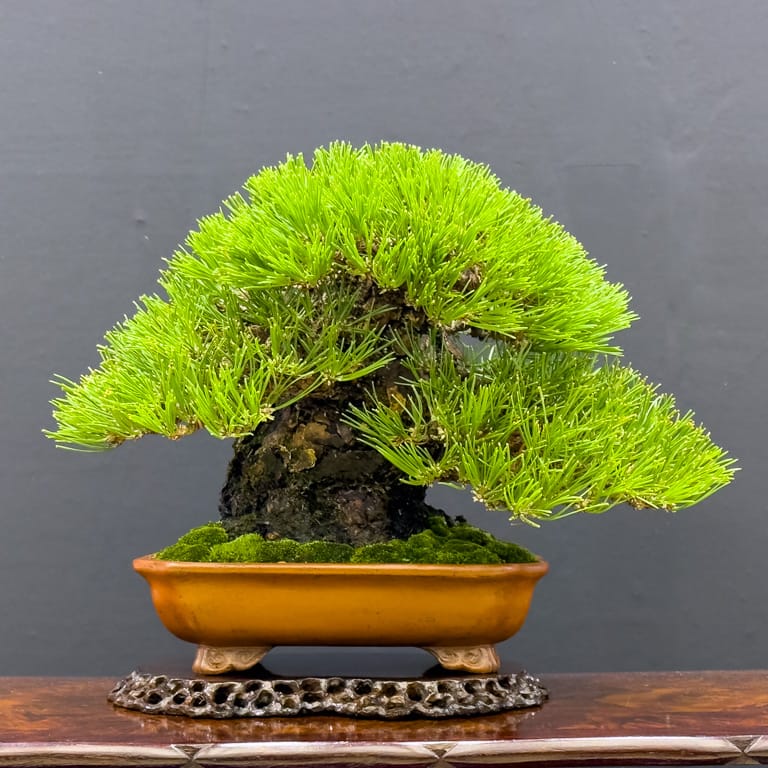
Black pine (Kuromatsu)
Because the tree flows to the right, the box will go on the left side of the display.

Black pine on top of the box stand
Step two: Find four trees for inside the box stand
Four trees generally fill the four quadrants within the box stand. Two of these trees are generally green (conifers or broadleaf evergreens), and two are shown in winter sillhouette (deciduous species).
To avoid making the arrangement of trees within the box look lopsided, the green trees are placed opposite each other in an “X”-like pattern. Likewise for the deciduous species.
You’ll notice that all of the trees in this display are outstanding specimens.
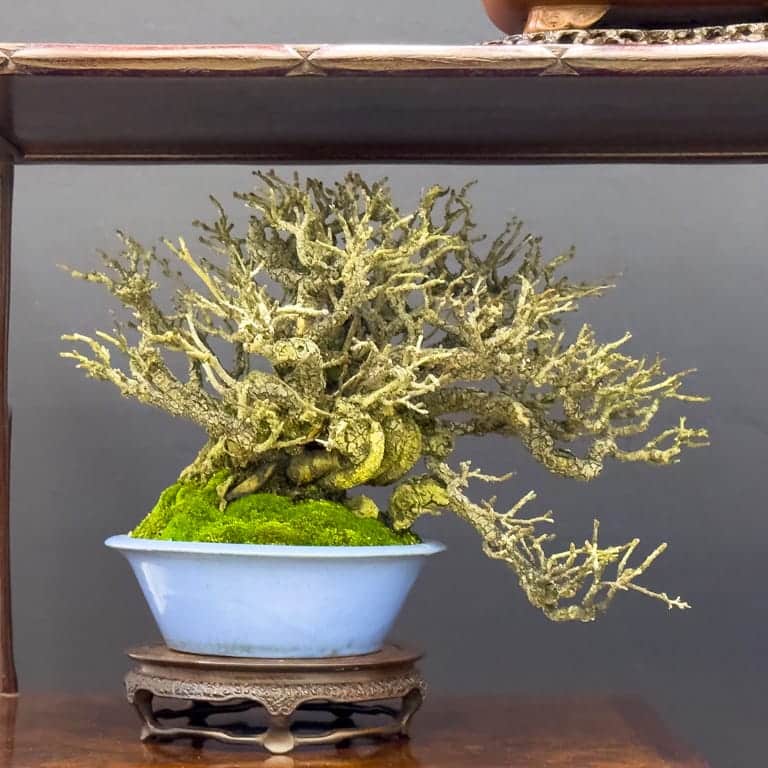
Dwarf Japanese flowering quince (Chojubai)
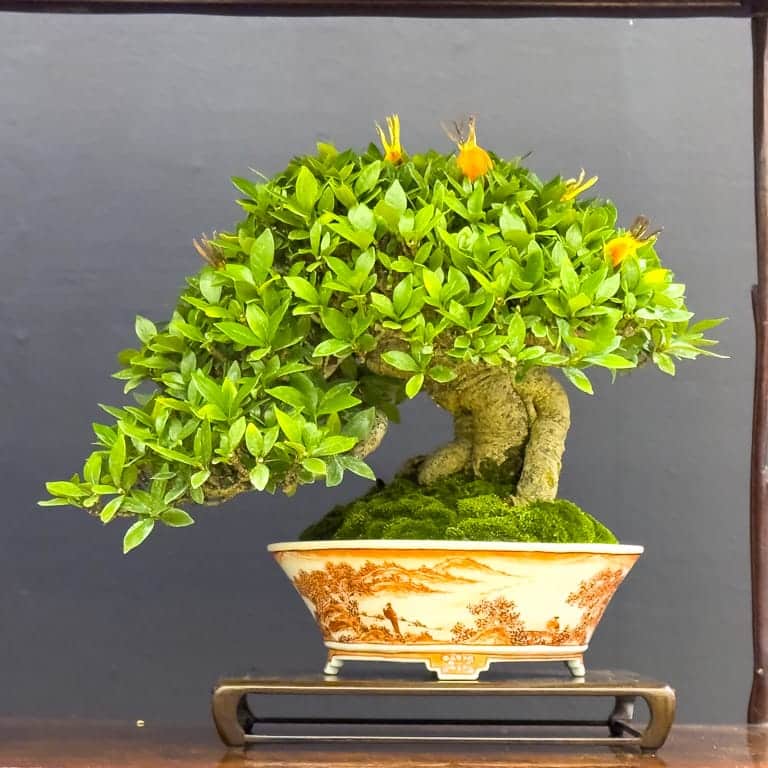
Gardenia (Kuchinashi)

Dwarf kumquat (Kinzu)
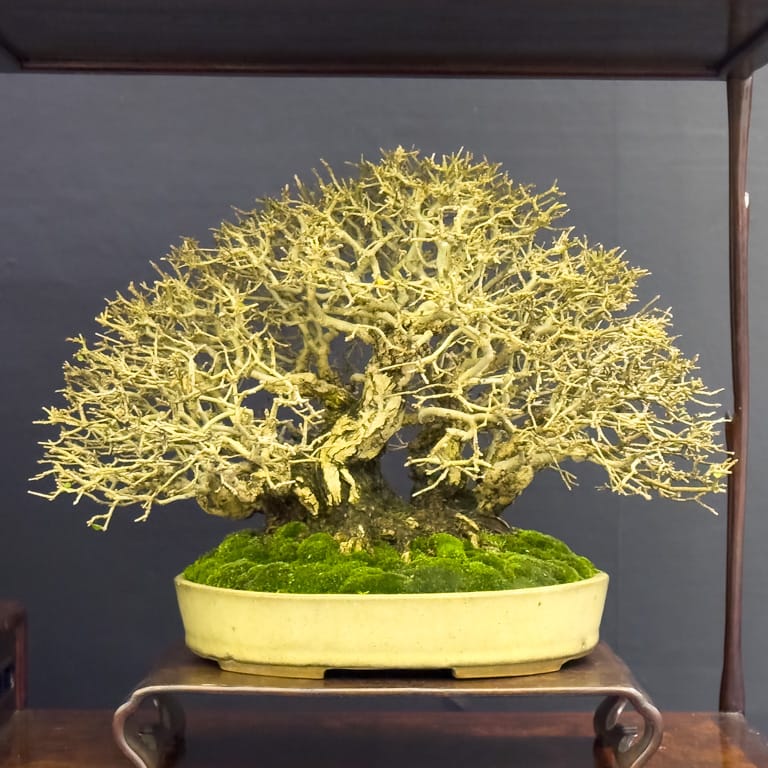
Privet (Ibota)
Step three: Select a tree and accent to counterbalance the box stand
With the first five trees in place, the last step is to select a tree, often a semi-cascade itoigawa juniper, that flows to the box stand on the other side of the display.
Because this one tree has to provide balance for the rest of the composition, it’s usually the largest tree in the display. Height-wise this tree is often displayed about mid-way between the two shelves within the box stand.
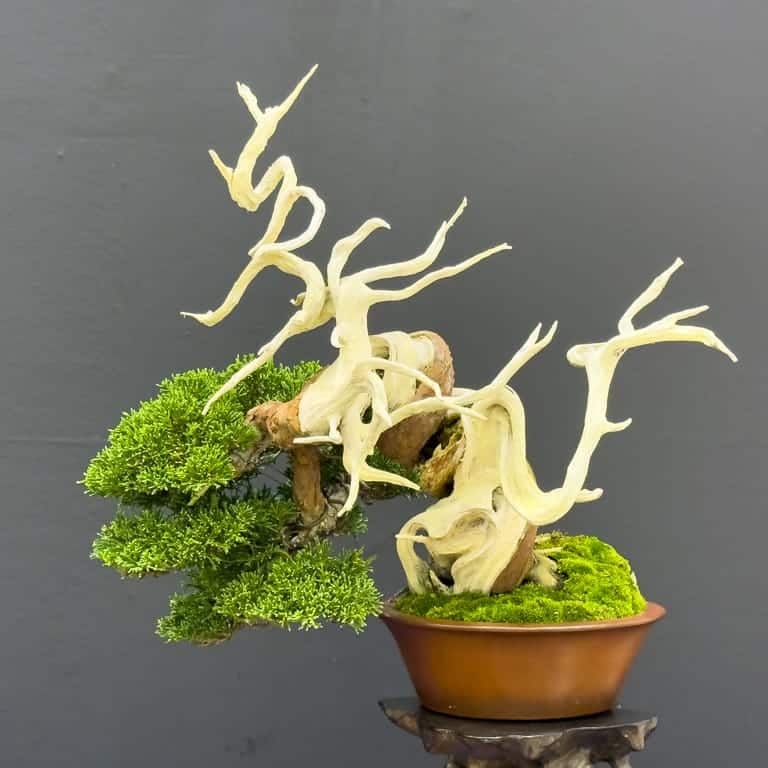
Chinese juniper (Shimpaku)
The accent generally accompanies this outer tree, and these two points are often displayed on either a board that matches the box stand or a natural slab.

Juniper with accent on a slab
Here’s how it all comes together.
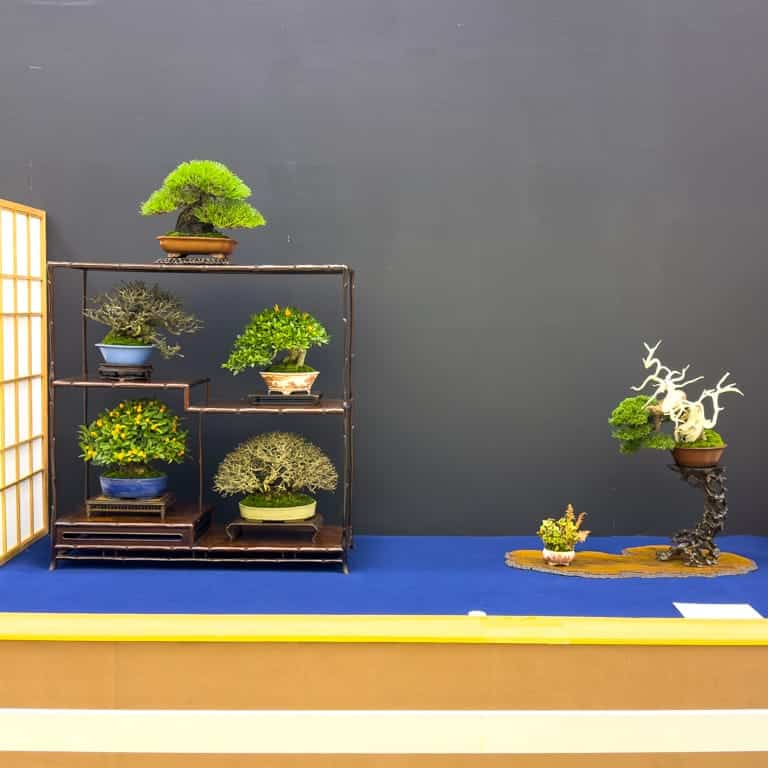
The complete display
With these basics in mind, we can begin to appreciate the other displays in the show. More on that next time.
News & Events
- Next weekend is the California Shohin Seminar. The event will be held at the Hotel Mission De Oro in Santa Nella, California, from January 31 – February 2, 2025. The weekend will be full of workshops, vendors, and demonstrations. Come and see why the event is known as one of the most fun events on the bonsai calendar. Learn more at the event website.
- The Naka Memorial Exhibition, the premier juried exhibit in Southern California, is currently accepting submissions for show trees. The event will be held in August, 2025, at the George J. Doizaki Gallery in Los Angeles. Submissions for trees will be accepted through May 1st. Submit your tres and learn more about the event at the Naka Memorial Exhibition website.
- I have a new book coming out this spring (more on that in a few weeks). If you’d like to help with the launch by promoting the book in your community, send me a note and I’ll follow up ahead of the kick-off with details.
- Now that repotting season is in full swing in the Bay Area, I’m looking for volunteers who’d like to help around the garden. Although the work won’t be glamorous, it’s a great opportunity to work with trees at different stages of development. If this sounds like fun, send a note and I’ll follow up with dates and details.
Subscribe to Bonsai Tonight
New Posts Delivered Every Tuesday and Friday
Mel B says
Thank you! I mentioned elsewhere how there were so many dome shaped trees in the exhibition that they were disturbing to my eyes. I’m glad I’m not the only one to see it.
Your blog is always a worthwhile read, thanks!
Leigh Blake says
Thank you!! A beautiful exhibit!! Very exciting. For those who read National Geographic Magazine , page 102 is devoted to John Naka’s “Goshin” and is showing the current masterpiece that Mr Naka started in the 1950s… definitely NOT a Shohin…but worth mentioning… Thank you again, this is so wonderful!!
Graham Hues says
Thanks Jonas, it’s great to visit these events through your eyes.
With the black pine, the needles look they have been trimmed/cut?
Jonas Dupuich says
That’s right – a lot of the needles have been trimmed on the pines in the exhibit. The tips will turn brown in time but will otherwise be OK.